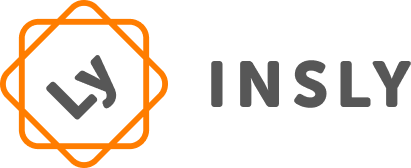An Agency Management Software (AMS) is the largest technology expense for an insurance agency, regardless of the particular vendor or platform.
When managed well, these systems help an agency maximize staff productivity, provide a better customer experience, and increase agency profitability. But, an old or outdated agency management software is a drain on agency productivity, staff morale, and profitability.
Selecting and implementing a new system is a massive undertaking. However, there does come a time when moving to a new agency management software is worth the effort. What are the signs that the agency should start looking at other options? How does an agency owner evaluate when it’s time to evaluate a new system?
The following is a list of some indicators that your agency should take a look at the current options. Any of these items by themselves is not a sufficient reason to make the move; however, the more that apply to you, the more likely it is that your organization needs a new system and should begin the evaluation process. Please note: These items are not listed in any particular order.
1. You’ve been using your existing system for more than 10 years.
What was state of the art 10 years ago is likely old today. Your existing system may work just fine for your agency, but what opportunities might you be missing? Newer web-base systems are easier to navigate. Training new — or younger employees — is easier when the system uses standard website navigation features.
2. You have an in-house system.
Cloud-based systems have improved significantly over the last few years. A cloud-based agency management system is inherently more secure than a system maintained by your agency. Keeping client information secure should be a top agency priority. From a disaster recovery standpoint, it also makes sense to be able to access client information from any location where you can find an Internet connection.
3. Existing servers need to be replaced.
Needing to replace agency hardware is a great time to evaluate other options. If the agency needs to spend thousands of dollars to upgrade equipment, it’s a good time to evaluate cloud-computing options.
4. Desktop computers are 3 years old — or older.
The type of hardware you need at each desk will be different based on whether your existing system is in-house or cloud-based. The in-house system typically requires more powerful computers.
5. The agency doesn’t use or can’t use all industry carrier communication options.
How well does your existing agency management software support industry carrier communication standards and processes?
Large productivity gains are available to those organizations that maximize their use of download and real-time communication options. The easier it is for staff to use these, the more likely the agency will see productivity gains.
Personal lines download has been available for a long time; however, gains have been made in the number of download options available. This includes more personal lines types of business, small commercial download, claims download and direct bill commission download. Real-time transactions that you should be able to use include: billing inquiry, claims inquiry and policy inquiry.
6. Paper is everywhere.
The move from paper to electronic document management can help an agency be more efficient. Those agencies that continue to rely on paper copies of policies and other documents may have a people problem (staff likes the paper), or they may have a system problem.
How easy is it to capture electronic records into your system? How many steps does it take to “attach” a document to the policy file? Hundreds of electronic documents are attached every day. If the process is not easy and smooth, staff will rely more on paper to get work done.
7. Agency staff complains about a backlog.
Again, the reason for the backlog may be a platform issue. There are a limited number of processes that agency staff complete. New business, renewals, policy changes, certificate processing, audit processing, and claims reporting and tracking are a few.
If your current agency management system requires extra and unnecessary keystrokes to complete each task, backlog will inevitably build. This frustrates staff and lowers morale. One way to measure how well your existing system helps staff complete these transactions is to measure how many steps it takes, thus how much time.
8. Training takes too long for new staff.
Older, menu-driven systems take longer to learn. Each person has to learn how to navigate the system and learn where functions are located. It takes time — a lot of time.
Newer, web-based systems rely on simple website navigation and user interface techniques. They make extensive use of hyperlinks to access specific information. Because of their use of sites, newer staff may be much more comfortable with this type of navigation and user interface. Vendors for these systems often have a design philosophy of accessing any piece of information in as few clicks as possible.
9. You use a third-party system for accounting.
This is a bit of a technical subject, but accounting should be built into the agency management system.
Third-party, general-ledger-based accounting systems have a difficult time helping an agency keep track of insurance premium trust accounting. At a minimum, your agency management system should allow you to invoice, track receivables, track company payables and maintain a separate premium trust account.
The agency general ledger can then be handled by a third-party application.
10. You are not able to easily support remote staff and additional locations.
Cloud-based, web-architected platforms make it easier to support remote staff and locations. Because a cloud-based agency management software is available wherever an Internet connection is available, staff can log in from anywhere. This is becoming an important consideration when recruiting new and retaining existing staff.
The same principal applies to setting up additional locations. Either acquiring an existing agency or expanding to a new location becomes much easier when you only add more users to the current platform.
11. The agency management software doesn’t support marketing and sales.
I am receiving more questions and hearing more comments from agency owners regarding this topic. Customer relationship management, sales pipeline management, marketing automation and campaign management are tools agencies need to connect and build relationships with prospects today. The agency of the future requires a platform with a disciplined process to build client and prospect relationships.
This list is presented as a way to help you evaluate whether your agency is getting the most out of your existing system. The more items that apply to your organization the more likely you need to take a look at what other options you might have. There are about 35 different agency management system platforms available.
As I wrote in the beginning of this column, selecting and then implementing a new agency management system is a massive undertaking. It should not be taken lightly. At the same time delaying upgrading to a new system could cost the agency dearly.
Steve Anderson, CIC, is an authority on insurance agency technology, productivity, and profitability. Check out his free weekly newsletter “TechTips” and other resources for the insurance industry on his website at steveanderson.com.
Photo credit: Shutterstock. Original article from propertycasualty360.com.



